Car Sales
Fuel Miser Comparison (2010/2022) Ford-Peugeot

I thought I’d look at a list of cars that featured in an article written back in 2010, where I compared some of the thriftiest cars at that time. These were cars which had been designed to function as some of the world’s best fuel sippers. These vehicles were sold new in Australia, but I thought I’d add a new twist this time by adding what we can consider as the brand new version of these old models with their statistics for fuel consumption as a comparison – you know, a bit of nostalgia along with the new, and what’s changed – or not.
Note that the fuel consumption figures are based on the number of litres of fuel consumed every 100 km travelled. Often real world situations can play havoc with Lab tested fuel consumption figures, but this definitely gives you an interesting picture. And, here is the list that is in alphabetical order – just to be helpful:
Ford
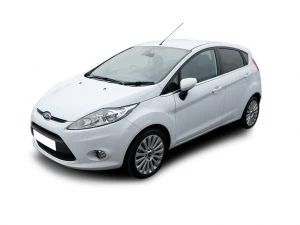
Ford Fiesta Econetic 2010
Back in 2010, the benchmark for fuel-misers belonged to the stylish Ford Fiesta Econetic. Nothing was able to beat the claimed 3.7 litres/100 km fuel economy figure that this car offered. It is a nicely designed car that looks good even today, and is also a great handling FWD Hatch.
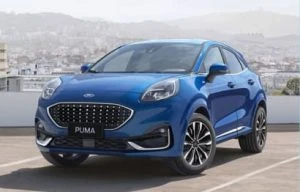
Ford Puma 2022
I’m not quite sure why, but Ford no longer sell us a new Fiesta Hatchback. However, you can buy a brand new Ford Fiesta-based Puma in 2022, which is a small SUV (Hatchback on steroids) that comes with a 92kW/170Nm 3-cylinder turbo petrol engine. Cabin space is claimed to be class-leading, and the boot expands from 456 litres to 1161 litres. You can also enjoy a fuel consumption figure of around 5.3 litres/100 km.
Honda
Honda’s ever reliable Civic is still a nice drive today. In 2010 Honda offered it in a Hybrid Sedan shape that employed a little 1.3 litre Hybrid Honda engine, delivering a combined economy of around 4.5 – 5.0 litres/100 km.
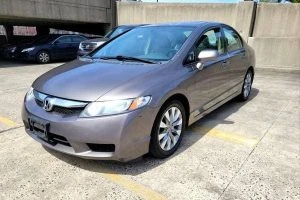
Honda Civic 2010
2022 sees the Civic come alive with a very classy exterior and a powerful 1.5-litre Turbo petrol engine with 131 kW of power and 240Nm of torque. Somewhere around 6.3 litres/100 km is attainable, and with a ride that is comfortable and athletic.
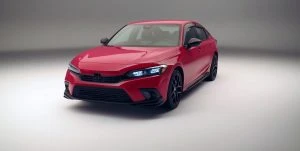
Honda Civic 2022
To find Honda’s current fuel miser, the brand new HR-V is an eco-friendly rewarding drive. Honda’s e:HEV technology in the HR-V utilises an intelligent 2-Motor i-MMD hybrid system that seamlessly switches between three modes to give you optimal performance, and a smoother, greener, and more fun driving experience. A claimed 4.3 litres/100 km for the e:HEV-L hybrid and 5.8 litres/100 km for the Vi X 1.6-litre petrol motor is on offer.
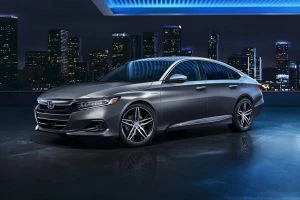
Honda Accord Hybrid Sedan 2022
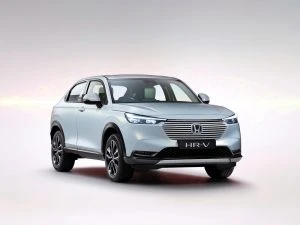
2022 Honda HR-V
All class, you can also get yourself into one of the best Hybrid Sedans you can buy: the 2022 Honda Accord Hybrid. It boasts a claimed 4.3 litres/100 km combined fuel economy – a very good figure for what is a sporty, comfortable family sedan, with striking looks and all the modern goodies.
Hyundai
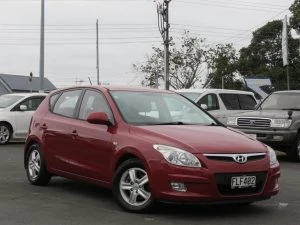
Hyundai i30 CRDI 2010
Back in 2010, Hyundai had come to the economy party with its 1.6 litre turbo-diesel Hyundai i30, known as the SX CRDi. Back then, it was Australia’s cheapest diesel car to buy new. The car was pleasant to look at, and it had a nicely finished interior and plenty of zip. With 255 Nm of torque, and a fuel economy figure of 4.7 litres/100 km, it’s still an economic little car to drive around in today.
2022 has seen Hyundai exploding with all sorts of new and exciting models that are economical, practical, and full of all the best safety and technology as standard! Hyundai’s 2022 i30 Sedan and Hatch can come with a 120kW/203Nm 2.0-litre aspirated petrol engine, a 150kW/265Nm 1.6-litre turbo-petrol and, in hot N variants, a storming 206kW/392Nm 2.0-litre petrol turbo. The 1.6-litre Turbo is the most frugal, offering around 6.8-7.0 litres/100 km combined.
But wait, there’s more! Hyundai’s 2022 IONIC and KONA models have skipped the Hybrid tech and gone straight to EV power.
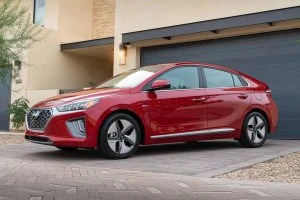
2022 Hyundai IONIQ
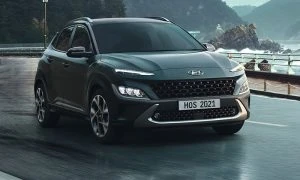
2022 Hyundai KONA
MINI
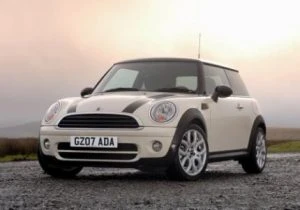
2010 Mini Cooper D
Mini, or BMW more correctly, offered the little Mini Cooper D in 2010 with a small 1.6 litre turbo-diesel engine, excellent fuel economy, and plenty of punch. As the frugal engine is linked to a six-speed manual gearbox, the claimed 3.9 litres/100 km was doable in a number of conditions.
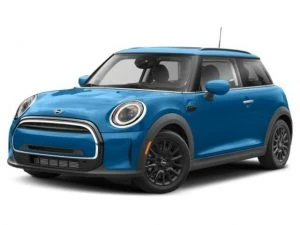
2022 Mini Cooper Classic
Fast forward to 2022, and a new Mini still has one of the catchiest hatchback designs you can buy, along with, perhaps, the best handling characteristics in a FWD small hatchback. They are definitely worth a look and loads of fun. You have many different models to choose from, however the base model Mini Cooper Classic is the most efficient now, with no diesel engine offered anymore. The 3-cylinder 1.5-litre Turbo petrol engine uses DOHC with VVT and VV-Lift technology, and can return a BMW claimed 4.9 (Highway), 6.9 (City), and 5.7 (combined) litres/100 km, respectively.
Peugeot
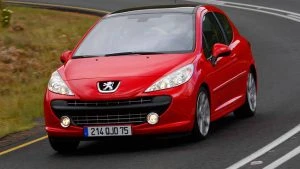
2010 Peugeot 207
Small French Pugs have always been a favourite hatchback of mine. For all their quirks, they are comfortable, practical, efficient, and generally classy all-round. In 2010, the little Peugeot 207 offered a fine economy package in the XT HDi, boasting just 4.8 litres/100 km combined.
2022 sees Peugeot offering us the 2008 GT with a ULP 1.2-litre Turbo 3-Cylinder motor capable of 114 kW, 240 Nm and a claimed economy figure of 6.1 litres/100 km. With this one, you get a very comfortable, practical little SUV with premium safety features.
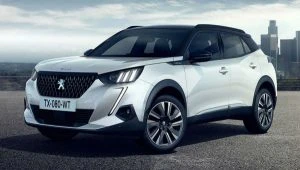
2022 Peugeot 2008 GT
Hybrids have taken off, and so the best and most impressive Peugeot of the lot is the new Peugeot 508 GT Plug-in Hybrid. The 508 range has stunning lines and is an exciting car. The 508 Sedan or 508 Wagon are roomy, very comfortable, and loaded with excellent technology and safety. You fork out around $77k for one of these new, however, it costs way less than a German equivalent. Peugeot reckon you can obtain 1.8 litres/100 km of ULP fuel use if your commute’s stars align. Regardless of whether you quite get down to this, this sort of hybrid travel is impressive in its own right!
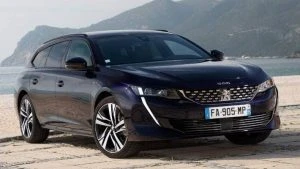
2022 Peugeot 508 GT Wagon
Fuel Miser Comparison (2010/2022) Audi-Fiat

One of the easiest ways to counter any rises in the fuel prices is to look at downsizing to a more economical car. If this sounds something you’d be into, then you certainly won’t be the first person to do so. We’ve just purchased a smaller Honda Jazz as a run around. Just think back to the fuel crisis in the seventies.
Anyway, it’s always an interesting topic, and who wouldn’t mind driving a new- to late-model car that spends less time at the gas pump. If you are a commuter, then you’ll appreciate owning a car that doesn’t cost the earth to run.
I thought I’d look at a list of cars that featured in an article written back in 2010, where I compared some of the thriftiest cars at that time. These were cars which had been designed to function as some of the world’s best fuel sippers. These vehicles were sold new in Australia, but I thought I’d add a new twist this time by adding what we can consider as the brand new version of these old models with their statistics for fuel consumption as a comparison – you know, a bit of nostalgia along with the new, and what’s changed – or not.
Note that the fuel consumption figures are based on the number of litres of fuel consumed every 100 km travelled. Often real world situations can play havoc with Lab tested fuel consumption figures, but this definitely gives you an interesting picture And, here is the list that is in alphabetical order – just to be helpful:
Audi
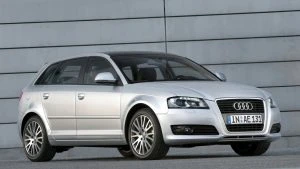
Audi A3 TDI 2010
The 2010 Audi A3 TDI offered a tidy package with practicality and comfort on its side. It uses the 1.9-litre TDI engine linked to a 5-speed manual gearbox that has plenty of useful torque and manages a fuel economy figure of around 4.5 litres/100 km. It was probably one of the roomiest economy cars on this list at the time.
Audi’s 2022 A3 is available in three model grades and two body styles ” Sportback (hatchback) and Sedan. Two powerplants are available for the stylish new A3. The most fuel efficient is the 35 TFSI 1.5-litre turbo-petrol with mild-hybrid technology producing 110kW/250Nm with a claimed 5 litres/100 km combined economy.

Audi A3 2022
Audi also has the smaller A1 model to add to your shopping list, which you can now buy new. It has a 1.0-litre 3-cylinder ULP engine with 85kW/200Nm and a 5.4 litres/100 km combined economy, or a 1.5-litre four-cylinder 110kW/250Nm option with a 5.8 litres/100 km combined economy.

Audi A1 2022
BMW
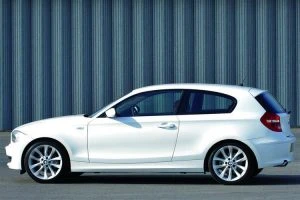
BMW 118d 2010
At the time, another small German car, the 2010 BMW 118d, offered a fun drive and used an automatic gearbox with a stop/start function for the engine. It also offers a slick 6-speed manual gearbox option and achieved an impressive 4.5 litres/100 km for its combined fuel economy. You have 300 Nm of torque, and it feels a punchy little powerhouse, and it’s also RWD!
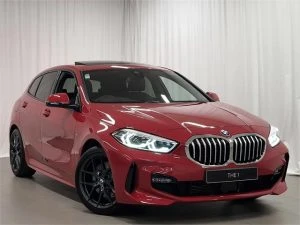
BMW 118i M Sport
In 2022, the 1-Series is available in a 118i M Sport version, which uses a 103kW/220Nm three-cylinder turbo ULP (unleaded petrol) motor with a claimed 5.9 litres/100km combined.
Citroen
The French loved to rival the Germans, and still do, so it was no surprise to see that the Citroen C3 and C4 featured in 2010. They are still nice-looking and comfortable cars. The Citroen C3 HDi offers the driver a tidy fuel consumption figure of 4.4 litres/100 km, while the bigger and roomier C4 HDi could deliver 4.5 litres/100 km in combined fuel economy runs.
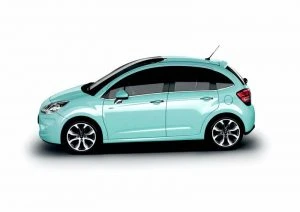
Citroen C3 2010
2022 sees Citroen’s C3 with much more grown-up styling, and a 1.2-litre three-cylinder 82kW/205NmTurbo petrol engine that delivers the power through a 6-speed automatic FWD driveline. Fuel consumption should see around 5.7–6.4 litres for a Worldwide Harmonised Light Vehicle Test Procedure (WLTP) combined cycle, which is the current testing process for measuring a new car’s fuel economy, electric driving range, and emissions.

Citroen C3 2022
Fiat
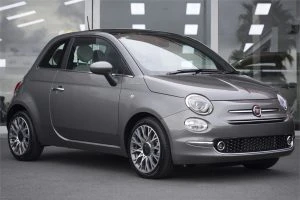
Fiat 500 2022
One of the 2010 super cuties, and still with endless loads of flair, is the nicely packaged turbo-diesel Fiat 500 that captures your attention. Whether it is the 1.3 JTD engine mated to a 5-speed or 6-speed manual gearbox, both options provided a thrifty 4.0–4.5 litres/100 km fuel consumption.
2022 Fiat 500 cars are still available new, of course with all their modern updates and new technology like Apple CarPlay and Android Auto, Bluetooth connectivity, and updated safety technology. The current 500 and 500 Convertible offer a manual or single-clutch automated manual five-speed gearbox that underpins the driving force behind the 1.2-litre 4-cylinder engine producing 51kW and 102Nm. Fiat rate it good for around 4.9 litres/100 km on a combined run, making this a great modern car to drive in an urban setting.
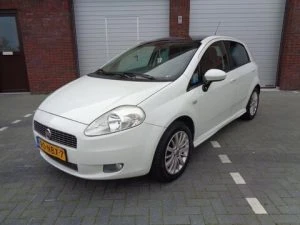
Fiat Punto 2010
In 2010, the Italian flamboyance continued with the Punto 1.3 and 1.4 JTD models. The Punto handles the road well, making it rewarding to drive, while returning a combined 4.6 litres/100 km. Currently, Fiat no longer sells a New Punto model, so, if you’re into Fiats, then the 500 is the one for you.
New Cars and Software Updates

How would you react if you had to pay for the apps that appear on the touchscreen of your new car? Various auto manufacturers are looking at new ways to charge owners money for features that were previously sold as an option for the car when you bought it new. One idea that has shown up in their brainstorming sessions was to charge car owners subscription fees for features like Apple CarPlay and its phone-pairing connectivity – as BMW is already doing. Of course, this has been a feature that has been included for free on many mainstream cars.
Perhaps not so surprising to many would be the results that Cox Automotive collected, which were collected from a survey that asked a relatively small group of a little over 200 people about their thoughts and attitudes towards having to pay over and over again for features that used to be included at the point of sale. Around 75% of the survey respondents would refuse to pay for features on an ongoing basis.
When asked about having to pay for any safety features on an ongoing basis, the survey showed that around 80% would not want to pay for these safety items again and again. However, if forced to, these same respondents would be prepared to pay up to $35 per month. I’m not sure whether the people surveyed were by enlarge high-flyers or a decent cross-section of society that included your average wage earner. This cost per month was the highest level that these respondents would be prepared to pay for them if they were forced to.
A full 92% of respondents said that the physical items like heated and cooled seats, massage functions, or a refrigerated drinks box should be purchased as a one-off-at-the-point-of-sale option, just like anyone does now when they buy a new car with extra options.
A new car these days is full of computerised technology, so any software updates or subscription fees for software enhancements, EV power upgrades, satellite or vehicle locator enhancements need to be paid for somewhere along the line. The funny thing is that, even as with a standard Office update on a desktop, the real-life software updates rarely have any significant practical benefits in real-life usage for the user. Sometimes a new desktop Office update can even complicate things with the user having to relearn the fifth new visual format and appearance update in two years – I know, I was probably exaggerating.
I guess I would be prepared to pay for a driving range enhancement or a better battery capacity after purchasing a new EV, though I guess this could be a bargaining carrot for keeping a customer longer and loyal to a brand, or even enticing them to buy a certain car in the first place.
Interestingly, around 50% of the survey respondents weren’t even aware that subscription fees for car features were a prerequisite. Rising costs that grow quicker than someone’s usable income is never a welcome scenario, so these sorts of surveys and results will hopefully provide auto manufacturers with the necessary feedback from their customers, and on the customers’ tolerance for any new additional fees in general.
Reasonably Priced Hybrid Vehicles (MG to Z)
In-between stages can sometimes get tricky. The next set of sit-ups before truly hitting your peak fitness regime. That gap year before study, or the six months prior to the new job contract starting. What about the EV world? We’re not capable of running a full fleet of EV cars yet, but maybe there’s an in-between vehicle that ticks all the right boxes before we go fully electric.
The truth is that the new hybrid vehicles are the best cars for this moment in time. They deliver the very best low fuel consumption figures and will also try to run pure electric as much of the time as is practical or possible.
Hybrids are great vehicles, usually well-priced, thus perfect for softening the blow to the wallet – there are some hideously expensive EVs available. Most desirable new EVs have price tags that, for most of us, will be well beyond our budget. So what hybrid vehicles are on the market for reasonable money? How much will they set you back when you buy new? And what sort of fuel consumption can you expect? Let’s have a look and see (MG to Toyota)…
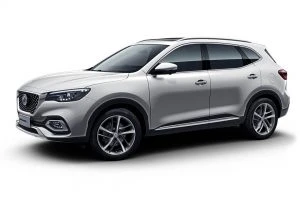
MG HS Plus EV SUV
Yes, a new and very fuel efficient Hybrid for less than $50k is possible, thanks to the snazzy MG HS Plus EV SUV. Nice to drive, comfortable, and with roomy interiors, loaded with technology, and five-star safe, these are a great hybrid buy. The MG HS Essence-spec plug-in hybrid joined the range in 2021 and uses a 119 kW/250 Nm 1.5-litre Turbo four driving the front wheels through a 7-speed dual-clutch gearbox. It boasts a strong presence among class leaders that include the Toyota RAV4, Mazda CX-5 and Nissan X-Trail. It comes with 5-star safety technology that includes autonomous emergency braking with pedestrian avoidance and satellite navigation as standard. MG says it takes about 7 seconds for the 0-100 dash, while returning a fuel efficiency that can be as low as 1.7 litres/100 km or more commonly up to 5.7 litres/100 km.
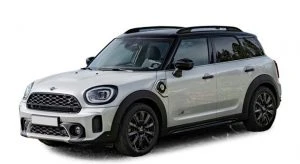
MINI Countryman Cooper SE Classic SUV
The Countryman Cooper SE Classic is a cute three-cylinder plug-in hybrid with electrically-assisted AWD. BMW indicates a combined cycle as low as 2.4 litres/100 km but may look more like 4.5 litres/100 km for most of the time. Combining a 1.5-litre Turbo 3-cylinder ULP petrol (100 kW/220 Nm) and a 7.6 kWh lithium-ion plug-in battery, this combined system equates to an output of 165 kW of power and 385 Nm of torque. The small MINI sees off the 0-100kmh sprint in 6.8 seconds and is a lot of fun to drive. The MINI Countryman’s roomy interior is backed up by 450 litres of luggage space behind the back seats, growing to 1275 litres if the seats are folded down.
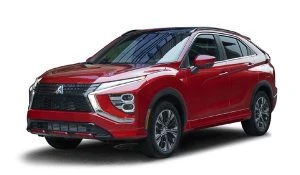
Mitsubishi Eclipse Cross PHEV ES
From around $51k you can get one of these new. The 2022 Mitsubishi Eclipse Cross PHEV ES is a very stylish small SUV with very low running costs. Aspire and Exceed models are also available. Comfortable and loaded with tech and safety, the Mitsubishi Eclipse Cross PHEV makes a lot of sense. Even the top of the range Exceed with all of the bells and whistles can be bought for under $60k. Mitsubishi indicates as low as 1.9 litres/100 km is possible, though real world figure of 3.7–4.0 litres/ 100 km is still impressively low in the real world. Boot space is around 350 litres, and 0-100 km/h takes about 10.5 seconds.
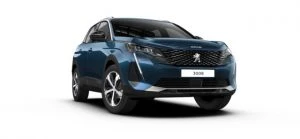
Peugeot 3008 GT Sport Plug-in Hybrid AWD SUV
For less than $90k you can have one of these very stylish hybrids. Boasting a 1.6-litre Turbo ULP engine and electric power that combines to a maximum of 222 kW, this sporty SUV uses an 8-speed automatic. Thanks to twin electric motors driven by a 13.2 kWh lithium-ion battery pack, the Peugeot 3008 PHEV enables zero-emissions driving for up to 60km. Its 222 kW power output and a 6.5-second 0-100 km/h acceleration time makes this one of the fastest SUVs in its class. It is also 4×4 capable, making it a highly desirable vehicle for undertaking light off-road terrain. Gorgeous full-grain Nappa leather-appointed seats with grey stitching, nicely-integrated twin digital screens (a 10.0-inch central touch-screen with satellite navigation and a 12.3-inch driver display), real world fuel efficiency likely be around 5–5.5 litres/100 km (but much less than this is possible), and you have yourself quite a vehicle. Peugeot reckons the 3008 PHEV can achieve a combined fuel consumption figure of 1.6 litres/100 km with CO2 emissions of 36.4g/km. Boot space is 395 litres.
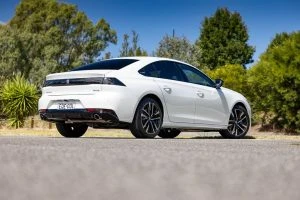
Peugeot 508 GT Plug-in Hybrid
From around $84k one of these extremely stylish cars can be yours. Its petrol-electric hybrid powertrain allows the svelte sedan to drive up to 55 km (WLTP) in silence, by switching off the combustion engine and using only its electric motor. It’s hard not to be impressed with the car’s looks and style. Inside, the leather seats, the dashboard design, the sporty cockpit layout, and the sheer attention to detail is very impressive. A 12.3-inch iCockpit digital driver’s display, a 10.0-inch central touch-screen, a 10-speaker sound system, dual-zone automatic climate control, five-star safety, it’s all there! 0-100 km/h takes around 8.2 seconds, while the Plug-in Hybrid system uses a 1.6-litre turbo-petrol four-cylinder engine developing 133 kW at 6000 rpm and 300 Nm at 3000 rpm to get the job done. The official combined-cycle fuel consumption figure is 1.8 litres/ 100 km, but to achieve that would require frequent charging – something that’s not always possible in the real world. Expect around 5.0 to 6.5 litres/100 km combined. Boot space is 487 litres.
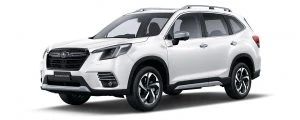
Subaru Forester Hybrid
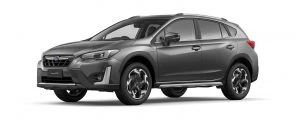
Subaru XV Hybrid
The fifth generation of Subaru’s mid-size, all-AWD Forester SUV was updated in late 2021 with a new look, plus refinements to steering and suspension and a revised instrument panel. The smaller XV Hatch also uses similar tech. Expect around 6-7 litres/100 km for the 2.0-litre boxer-based mild hybrid powerplants. Off-road is no problems at all for the Forester or XV and safety is off the top shelf. All Foresters and XV Hybrids get active cruise control, blind-spot monitors, lane-change assist, “active” LED headlights and rear cross traffic alert. The Forester offers truly generous passenger space and luggage capacity (422 litres expanding to 1768 litres with rear seats folded). The XV has 340 litres behind the rear seats. Both are nice to drive adventure seekers.
Toyota Hybrids
Almost every model on the Toyota showroom floor can be a hybrid. There are so many that I’ll list them all here in picture form.

Toyota C-HR Hybrid SUV from $42k.
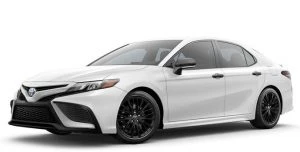
Toyota Camry Hybrid Sedan between $38-52k.
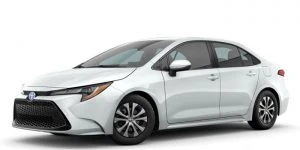
Toyota Corolla Hatch and Sedan between $32-40k.
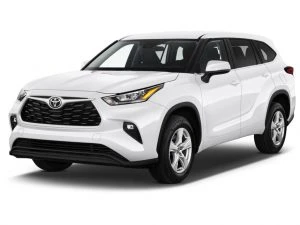
Toyota Kluger SUV between $60-83k.
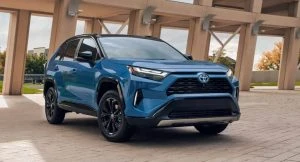
Toyota RAV4 Hybrid
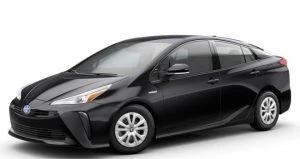
Toyota Prius between $43-51k.
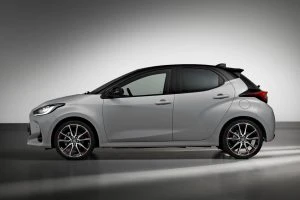
Toyota Yaris Hybrid
These are truly excellent hybrid vehicles, and, if you don’t know where to start, Toyota is a great place. Reliability, practicality, some of the best hybrid economy figures (usually very achievable: 3.5 to 5.5 litres/100 km), and excellent 5-star safety are all reasons why Toyota Hybrids are so good. They are also very competitively priced right across the board from the little Yaris Hatch to the larger Camry Sedan or Kluger SUV. Get ready to be impressed.
Be an in-betweener and gain some of the Hybrid benefits.